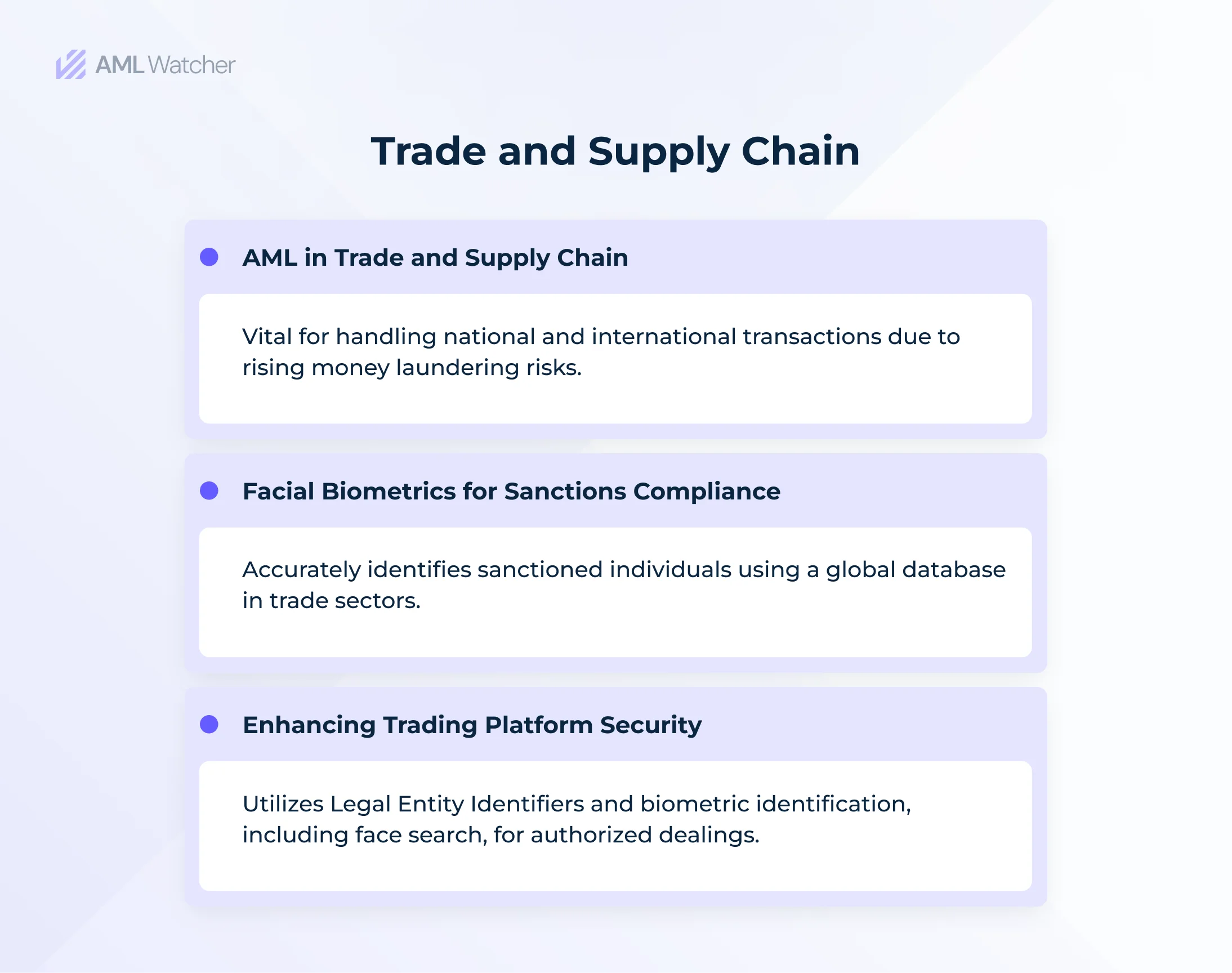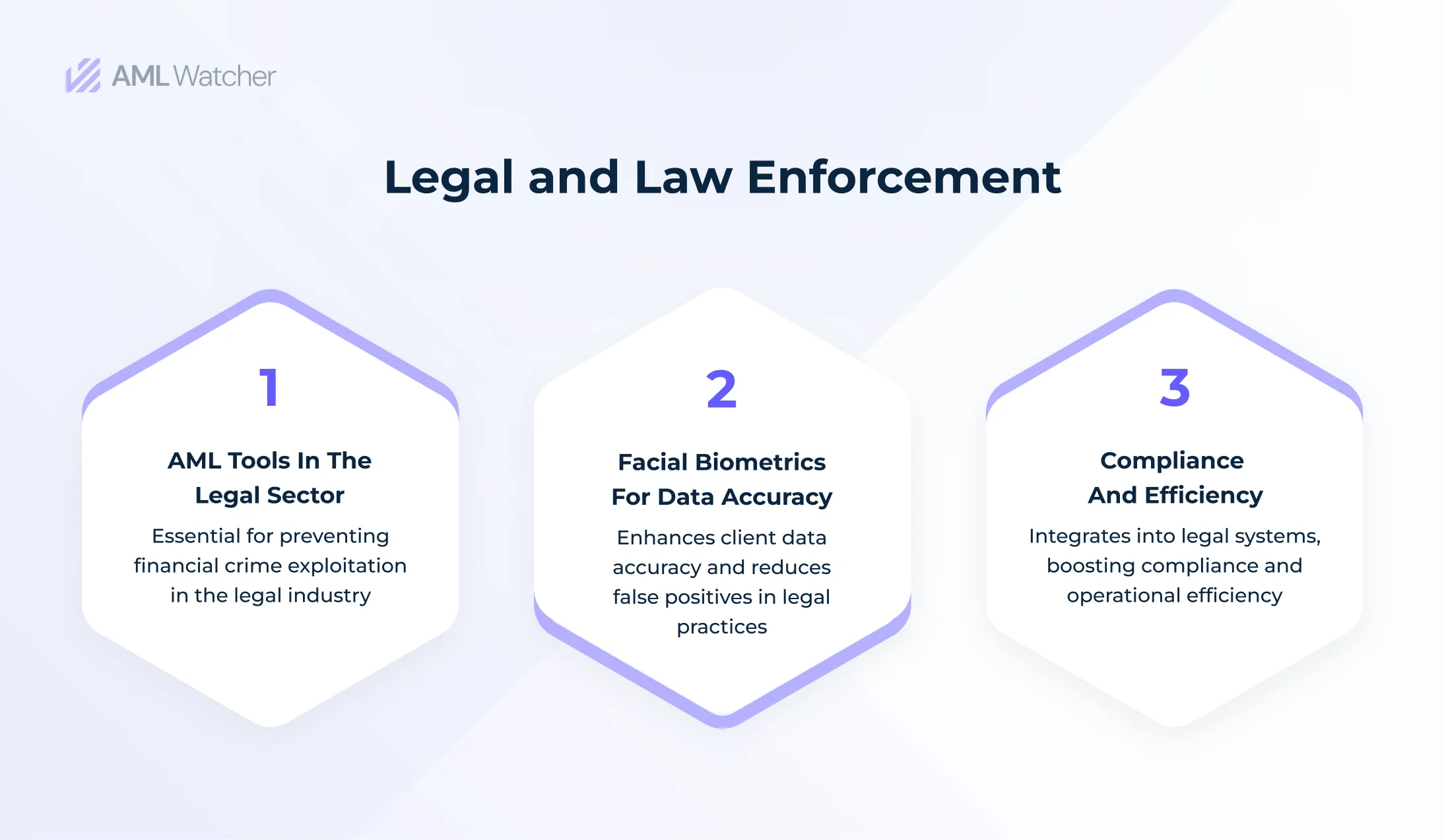
How Biometric AML Revolutionizes Compliance Across Industries
Compliance with AML regulations faces many challenges in almost all the major industries. The biggest challenge has always been the high rate of false positives which is such a grave pain point that the organizations switch the AML providers. The reason is that the high rate of false positives leads to huge costs spent on unnecessary investigations. This is best supported by the fact that false positives can account for over 95% of AML alerts, contributing significantly to a company’s compliance spending (the amount that could have been used in other growth projects), amounting to losses of over USD 3 billion annually. Additionally, apart from the occurrence of false positives, updating a huge dataset is yet another challenge. Doing this is important because organizations have to keep track of the evolving threats. However, this is a highly time-consuming and resource-intensive task which too needs an efficient and accurate tool to overcome the problems. This is better illustrated by the fact that to ensure financial crime compliance, financial institutions globally spend $274.1 billion an estimate. This high expenditure reflects the intensive resources required to update and maintain databases continuously. Keeping in perspective the challenges in AML tools as faced by the major industries, facial biometric screening emerges as a revolutionary technology. Surprisingly, this technology remains largely unexplored and underutilized in AML practices, representing a novel approach in the field. Since the outcomes of the screening using face biometric screening are more accurate (because of the facial features acting as the unique identifiers instead of textual evidence) and efficient, this technology is more beneficial for all industries.
AML Industry Challenges and the Need for Innovation
Financial Services
In the financial industry, because of direct dealings with money and finances, the risk of money laundering and terrorist financing increases. This makes it important for AML tools to be in place to not just ensure AML compliance but also safeguard the financial institutions and the customers from fraud. The MLROs working in financial institutions get overburdened by handling large volumes of complex data which especially requires periodic updates because the risk of missing out on anyone in the watchlists or PEPs is too high. Additionally, the MLROs also have to manage a high rate of false positives. To overcome the challenges in financial services, biometric AML technology, specifically face matching, emerges as a viable solution. This technology will firstly automate the work and will help in alleviating the false positive rates to a great degree because of its ability to produce exact matches, without putting the strain on MLROs in financial industries to carry out additional investigations or let go of valuable customer base.
Facial biometric screening, additionally also counters and addresses the problem of managing a large dataset, as the dataset is periodically updated.
Moreover, it assists in adhering to both country-specific and international sanctions, thereby ensuring comprehensive regulatory compliance by having the images of people in the database internationally as well.
Trade and Supply Chain
In the trade and supply chain sector, national and international transactions happen a lot. In such cases, adherence to AML regulations becomes very crucial since the risk of money laundering is on the rise. The industry confronts challenges like adhering to country-specific sanctions, navigating travel bans, and respecting trade embargos. In this case, facial biometric screening plays a crucial role because it allows face search from the database (containing watchlists, sanctions lists, and PEPs) that has images of people from across borders. The screening is very accurate hence it helps in identifying the individuals subject to various sanctions or embargos. A project conducted by the Global Legal Entity Identifier Foundation (with support from the Asian Development Bank) exhibited how Legal Entity Identifiers together with biometric identification which also includes face search can be used on a trading platform. This enabled the users on trading platforms to know that their counterparts or the ones with whom they were involved in supply chain dealings were authorized individuals. Additionally, facial biometric screening enables real-time, accurate compliance checks which ultimately help in significantly reducing the risk of regulatory breaches in global trade.
Legal and Law Enforcement
In the legal industry, AML tools are extremely crucial to avoid financial crime exploitation. The industry has to come across myriads of challenges like keeping client data up-to-date and accurate, keeping pace with regulatory changes, protecting a huge volume of sensitive and at times confidential information, and reducing the rates of false positives. Facial biometric screening addresses these issues very effectively. Once it’s made sure that the client data is accurate, it gives an accurate match after a face search. In this way, false positives are also reduced. This integration into legal practices enhances compliance and efficiency.
Gambling and Gaming
In the gambling and gaming industry, effective AML strategies are extremely important for preventing financial crimes (which are more common in this industry) and adhering to regulations. In this sector, tracking the trail of money is difficult which poses challenges related to fraudulent transactions. The integration of biometric AML screening technology, particularly face-matching allows the image of the individual (player) to be uploaded. This level of accuracy in identification plays a pivotal role in preventing unauthorized access and fraudulent activities. The deployment of face-matching biometric technology is unreservedly a significant step in managing and mitigating risks associated with financial crimes in the gaming and gambling sectors.
Key Insights
Biometric screening technology, particularly face-matching, is completely changing the outlook on compliance across various industries by countering key issues prevalent in this domain such as high rates of false positives, the need to continuously update databases, and managing a huge dataset. In the financial services sector, this technology alleviates the heavy workloads of MLROs (hence creating an ease of use for them) by offering precise identification and efficient data management, thereby reducing false positives. Moreover, this is making sure that compliance is done with both country-specific and international sanctions. The trade and supply chain industry benefits from biometric screening in making sure that legal and ethical compliance in international transactions are followed, particularly in adhering to sanctions and embargos, keeping in perspective real-world examples like the Global Legal Entity Identifier Foundation’s project demonstrating its effectiveness. In the legal industry, the biggest role that facial biometric screening plays is to enhance the accuracy of client data (with the use of facial measures) and at the same mitigate false positives, thus boosting overall compliance and efficiency. Similarly, in the gambling and gaming sector, biometric face-matching technology aids in accurate player identification and fraud prevention. The incorporation of this technology as offered by AML Watcher significantly helps in mitigating financial crime risks across various important industries.
We are here to consult you
Switch to AML Watcher today and reduce your current AML cost by 50% - no questions asked.
- Find right product and pricing for your business
- Get your current solution provider audit & minimise your changeover risk
- Gain expert insights with quick response time to your queries






